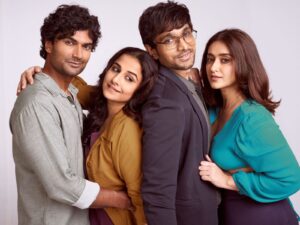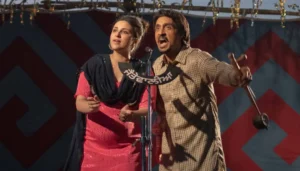
It is as if Hrishikesh Mukherjee’s characters in Anupama (1966) were aware of the film’s photographic finesse. Anita (Shashikala) asserts in one scene that a poetry session calls for dim lighting and she quickly does the needful. Truly, Jaywant Pathare’s camera makes love with the lights and the characters’ emotions in all black-and-white glory. His frames elegantly traverse from close-ups to wide shots to high angle ones with precise knowledge of the film’s oscillating moods. The characters with their reticence, grief or the feeling of being on the crescendo of happiness – all of it come alive with the camera’s studied use of motion and stillness. Also notable is his intermittent focus on inanimate objects like the piano, the flower pot and the likes while the people continue to converse or sing in the background.
In an era when jimmy jib cranes and other sophisticated equipment were unheard of, Pathare’s camera lusciously captured the picturesque landscapes as well as the people in the foreground. As a result, he made two of Hindi cinema’s most stunning faces of all times, Sharmila Tagore and Dharmendra, resemble muses of a celebrated artist – most notably in the dulcet ‘Kuch Dil Ne Kaha’.
Hemant Kumar’s soundtrack for the film, on the other hand, deserves a separate essay altogether. Versatile yet radiating a uniform silken quality, songs like ‘Dheere Dheere Machal’, ‘Kyun Mujhe Itni Khushi’ and ‘Bheegi Bheegi Faza’ form a significant part of Bollywood’s music history. ‘Ya Dil Ki Suno Duniyawalo’ in Hemantda’s voice is easily the delectable icing on the cake.
As for the film, Hrishikesh Mukherjee makes several statements that were bold and progressive for its times (1966). In a country that still iconizes patriarchy in the name of love (read Dilwale Dulhania Le Jayenge), Anupama‘s climax is a gutsy yet beautiful ode to gender equality and it becomes a concise expression of a woman’s freedom of choice.
Among other things, did you notice Anupama mentioned in Mukherjee’s 1971 rom-com Guddi?
ALSO READ: When ‘Dastak’ Created Terror Using Sound and Music

